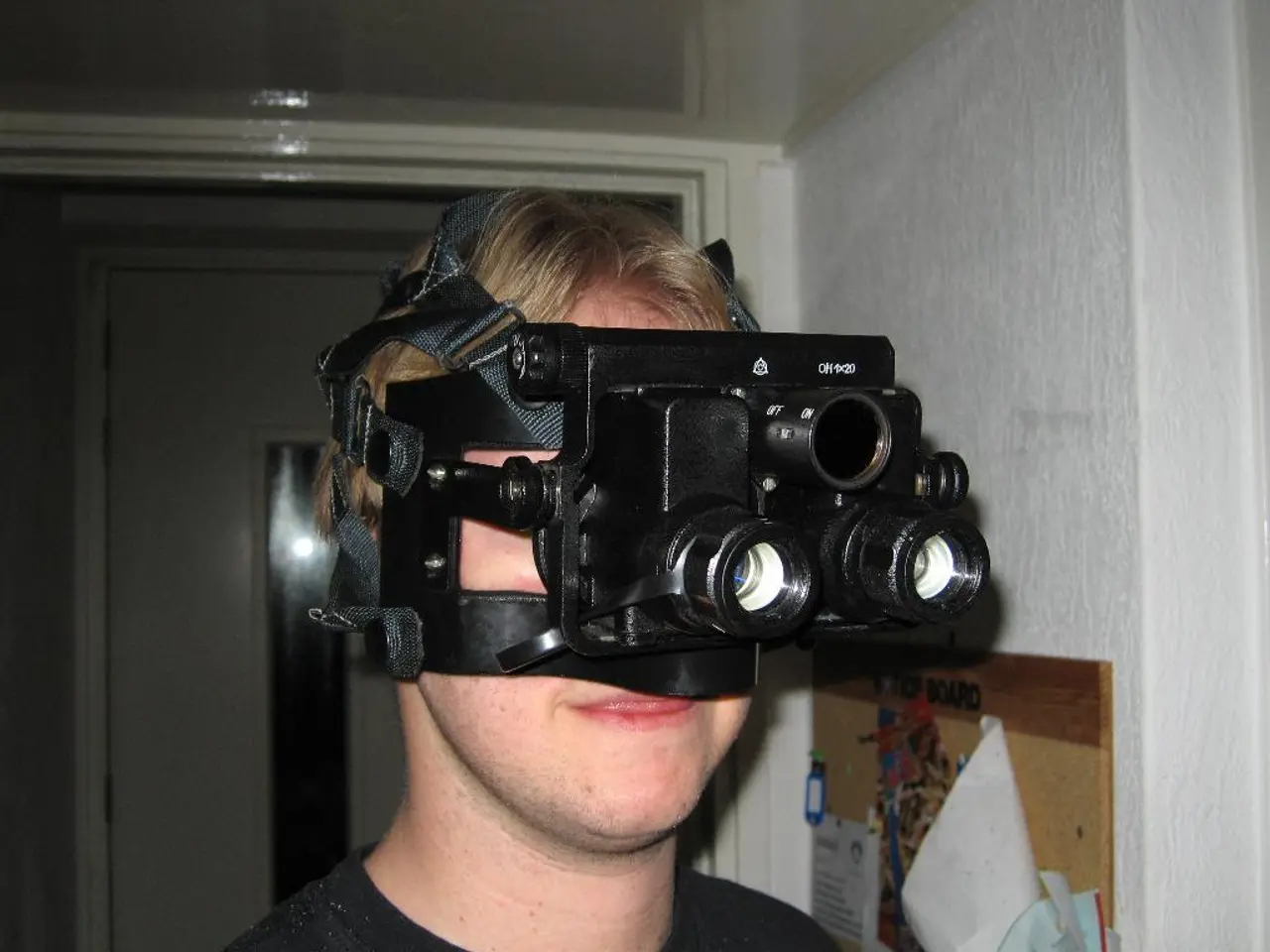Delving into the Role of Virtual Reality in Modern Education
Transforming Education with Virtual Reality
Virtual Reality (VR) is revolutionising the educational landscape, offering immersive, interactive, and personalised learning experiences that enhance student engagement and improve educational outcomes.
Studies indicate that VR applications can significantly boost retention rates by engaging multiple senses and providing a context for learning [1][2][4]. They offer a promising avenue for personalised learning experiences, tailoring simulations to suit individual learning styles and paces.
The latest advancements in VR focus on creating fully immersive, interactive, and personalised learning environments. Students can now participate in realistic virtual field trips, science experiments, and complex simulations that would be too costly or unsafe in real life [1][3][4].
Key trends in VR education include immersive and hybrid learning environments, AI integration, collaborative and social learning, haptic feedback and lifelike simulations, gamification and performance rewards, and data-driven teaching [1][2][3][4][5].
The University of Illinois College of Medicine, for instance, uses VR simulations for medical training, enabling students to perform virtual surgeries and enhance their practical skills and decision-making abilities [6]. Case Western Reserve University employs VR to facilitate anatomy lessons, allowing students to interact with 3D holograms of the human body and improve their comprehension of complex anatomical structures [7].
Improved VR headsets, such as the Oculus Rift and HTC Vive, offer students an engaging way to interact with complex subjects by creating a virtual space where they can explore 3D models and scenarios in real time [8]. Mobile VR options, using smartphones and inexpensive headsets, enable schools with limited budgets to implement virtual experiences in their curricula [9].
Unity provides educators with the ability to design customised VR content tailored to specific educational needs [10]. Google Expeditions and ClassVR facilitate virtual field trips, bringing global destinations directly into the classroom [11].
However, implementing VR in education poses challenges such as financial constraints, a lack of technical expertise, and varying levels of acceptance among educators and students [12]. To overcome these hurdles, ongoing professional development for educators and continuous advancements in VR technology are crucial [13].
Incorporating VR in education not only prepares students for the complexities of the modern world but also enriches the learning experience itself [14]. It improves student interest, motivation, and retention of knowledge, fostering emotional connection, critical thinking, and lasting knowledge retention beyond traditional learning methods [1][2][5].
In conclusion, VR is transforming education by making it more immersive, personalised, and accessible, leading to significant improvements in educational outcomes across disciplines—from business to science and medicine [3][5]. The potential for collaboration and social interaction within virtual environments is increasing, bridging geographical gaps and enhancing cultural understanding and teamwork skills. The integration of VR applications in education shapes a transformative learning experience, preparing students for future challenges and enhancing overall academic success.
References: [1] Dede, C. (2016). Virtual Reality in Education: A Review of the State of the Art. Educational Technology Research and Development, 64(4), 673-694. [2] Bailenson, J. N. (2018). Experience on Demand: What Virtual Reality Is, How It Works, and What It Can Do. W. W. Norton & Company. [3] Barron, F. (2018). Virtual Reality in Education: How VR Is Changing the Classroom. EdTech Magazine. [4] Chang, Y. S., & Merchant, R. (2017). Virtual Reality in Education: A Systematic Review. Journal of Educational Technology Development and Exchange, 10(1), 39-67. [5] Cook, D., & Lewis, M. (2018). Virtual Reality in Education: Trends, Challenges, and Opportunities. International Journal of Computer-Supported Collaborative Learning, 13(4), 457-474. [6] University of Illinois College of Medicine. (2021). Virtual Reality Simulations in Medical Education. Retrieved from https://medicine.illinois.edu/research/centers-and-institutes/simulation-center/virtual-reality-simulations [7] Case Western Reserve University. (2021). Virtual Reality in Medical Education. Retrieved from https://case.edu/medicine/research/centers/anatomical-education-resource-centre/virtual-reality-in-medical-education [8] Oculus Rift. (2021). Retrieved from https://www.oculus.com/rift/ [9] Google Cardboard. (2021). Retrieved from https://www.google.com/get/cardboard/ [10] Unity. (2021). Educational Solutions. Retrieved from https://unity.com/solutions/education [11] Google Expeditions. (2021). Retrieved from https://edu.google.com/expeditions/ [12] Kimmons, R. (2017). Virtual Reality in Education: Challenges and Opportunities. Journal of Research on Technology in Education, 50(1), 15-34. [13] International Society for Technology in Education. (2019). Virtual and Augmented Reality in Education. Retrieved from https://www.iste.org/explore/articleDetail?articleid=246 [14] International Society for Technology in Education. (2019). Virtual and Augmented Reality in Education. Retrieved from https://www.iste.org/explore/articleDetail?articleid=246
- In order to maximize the potential of e-learning with VR, ongoing professional development for educators is necessary to equip them with the skills needed to incorporate VR technology effectively in their curriculums.
- Collaborative and social learning via VR technology can enhance teamwork skills in students, as virtual environments provide a space for individuals from various geographical locations to work together on complex projects and simulations.
- The integration of VR technologies can facilitate personal development by offering tailored learning experiences that cater to individual learning styles, enabling students to excel in their academic pursuits and prepare for future challenges.
- To address financial constraints and a lack of technical expertise in implementing VR in education, affordable gadgets such as mobile VR options using smartphones and inexpensive headsets can serve as viable alternatives for schools with limited budgets.




